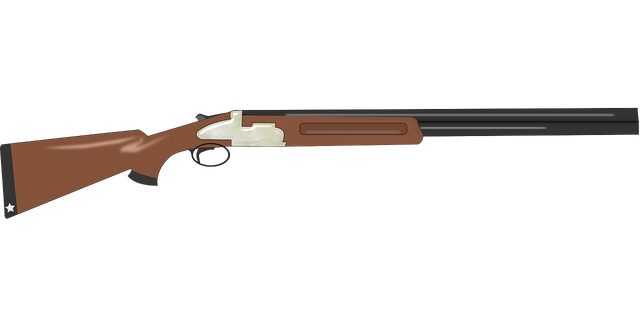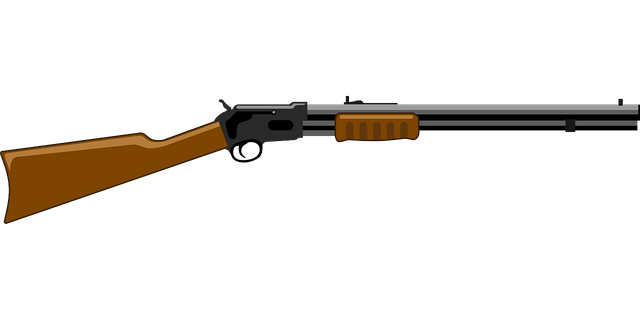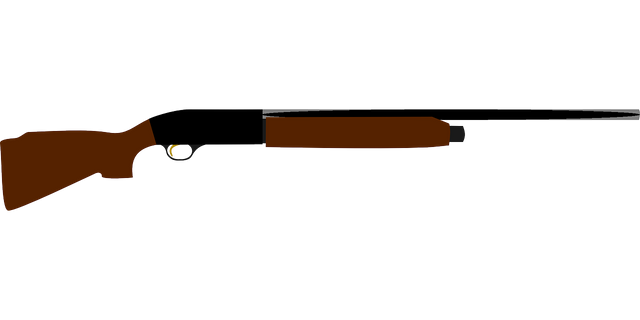Shotguns
A shotgun is the most versatile of firearms. The variety of commercial shells available is astonishing, and one shotgun can serve for hunting small game, big game, self-defense, and sport. The nomenclature for shotguns can be quite obscure, though. What is 12 ga. 2-3/4" 1 oz. #8 birdshot 3 dram equivalent, for example?
Gauge
Shotgun shells are described by gauge (or bore) rather than caliber, with the exception of the .410 shotshell. The abbreviation is ga. This is an old measurement method describing how many lead balls the diameter of the bore can be made from a pound of lead. A 20-gauge shotgun barrel can fit a lead sphere that weights 1/20th of a pound. Because of this inverse fractional relationship, the larger the number, the smaller the diameter of the barrel. 12 and 20 gauges are by far the most popular in the region where I live, but 10, 16, and 28 may be encountered.
Length
Some shotshells have been produced in longer-than-standard lengths on order to allow a new barrel upgrade to increase the potential in a shotgun without buying a new gun altogether. A standard 12 gauge shell is 2-3/4" long before the ends are crimped over the load to seal the shell. 3" and 3-1/2" magnum 12 gauge shotguns and shells are available, though.
Projectile
The projectiles in a shotshell are usually small pellets of lead or a similarly heavy alloy. Like shotgun gauges, the larger the number used for the size of shot, the smaller the shot. For sizes smaller than #1 shot, an increasing number of zeroes are used to describe ever-larger pellets. 00, or "double-aught," buckshot is incredibly common. Smaller pellets, like #4 buckshot, are also used by many hunters. The smaller the shot pellet, the larger the number of pellets fit a given weight of total shot. There are also two scales for describing shot. Buckshot and birdshot describe their intended use right in the name. The numbers used do not match. #4 buckshot pellets are far larger than #4 birdshot. Wikipedia has much more detailed information here.
While buckshot is clearly intended for deer hunting by its name, solid slugs are usually preferred for hunting deer with shotguns nowadays. Typical shotgun barrels are just smooth tubes, so the lead slug is cast with a rifling pattern that causes it to spin and gyroscopically stabilize as it is launched down the barrel. These can be surprisingly accurate even with the most rudimentary sights.
There are also specialty rounds for shotguns, but these are typically gimmicks. It is worth noting that rubber bullets, tear gas, and beanbag rounds are used by police as less-lethal munitions sometimes, though.
Powder
Shotshells are derived from black powder era, and still often include a "dram equivalent" to describe the modern smokeless powder charge as compared to a traditional black powder load.
So, "12 ga. 2-3/4" 1 oz. #8 birdshot 3 dram equivalent" means a large shotshell, standard length, loaded with 1 oz. of small birdshot pellets and a moderate to light powder charge. Such a shell is suitable for small game or target shooting.
Actions
Shotguns are made in a wide variety of actions, but the most common are break, pump, and semi-automatic.
Break Action

Image credit
This does what is says on the tin. The barrels are designed so they can hinge away from the action, and usually either slightly extract or forcibly eject the empty shells from the chamber. I say "barrels," but single-barrel break action shotguns do exist. Much more common, though, are double-barreled examples with either a side-by-side or over/under configuration. These are often designed with different chokes in each barrel. More on that later. There are some shotguns with more than two barrels, and some firearms incorporate one or more rifle barrels with one or more shotgun barrels for increased versatility.
Pump Action

To my eye, this looks more like a rifle than a shotgun. Oh, well. Image credit
Pump action shotguns typically have a tubular magazine under the barrel. A slide can be pushed back and forward to eject an empty shell and load a new shell. Greater capacity is the result, although most jurisdictions impose a capacity limit for hunting. Wood or plastic dowels can be inserted to restrict capacity and comply with such regulation.
Semi-automatic

Image credit
Semi-automatic shotguns usually look a lot like a pump action shotgun, but they harness some of the recoil impulse from the fired round to automate cycling the action. Some are instead loaded from a box magazine like a modern rifle. Since they rely on recoil to operate properly, they can fail to function when firing light loads.
Barrels
I previously described shotgun barrels as essentially a smooth tube, but that is not completely accurate. While they are made from a thin-walled smooth tube, the muzzle end often narrows to a slightly smaller diameter in order to control the pattern of shot. This is called a choke, and a tighter choke increases the shot pattern density at greater ranges. This ensures better hit probability depending on the intended game and anticipated range. Break action shotguns with multiple barrels are often designed with two different chokes so the shooter can select the barrel with the right choke for a given range. Many pump-action shotguns are designed so barrels can be changed for different purposes, and inexpensive Mossberg shotguns are sold with both a relatively short cylinder bore barrel that has no choke at all, and a longer modified choke barrel. More expensive shotguns have a threaded interchangeable choke insert system. Wikipedia has more information here.
Some shotgun barrels are designed with rifling specifically to better fire slugs, although this is detrimental if used to fire shot as it prevents a good shot pattern.
Sights
Shotgun sights are traditionally quite minimal, because a shotgun is not usually aimed like a rifle. A shotgun should usually be swung in an arc following the path of the intended target, with the shot fired to intercept it. It's a knack I can't say I have mastered. The sights used are usually one or two small beads on the barrel, and they rely on the human eye to align the barrel properly. In a two-bead system, just overlap the beads so only one circle is visible.
Optical sights have become more common, though. I have seen hunters use non-magnified red dot sights, and low-magnification optics on shotguns used with slugs are not unheard-of. Red dots may offer a better field of view by raising the eye level slightly above the barrel. Scopes can help with longer-range single-projectile shooting when a shotgun is employed more like a rifle.
Purposes
Longer barrels and tighter chokes are generally better for hunting waterfowl and turkeys, because they extend the effective range. Some game birds are encountered at much shorter distances, and little or no choke maybe preferred.
When using a shotgun for target shooting, the best option is a clay disk called a "clay pigeon." These are thrown into the air using mechanical means or manually with a throwing aid in order to simulate the flight of game birds.Some systems also roll a clay pigeon along the ground to imitate a rabbit. When hit, they shatter and provide an excellent feedback reinforcement for the shooter. There are organized clay pigeon sports as well. Trap shooting involves taking turns shooting at single pigeons and rotating between five closely-spaced stations. Skeet shooting uses an arc of stations from which the shooter fires at pigeons launched from towers to the left and right. Sporting clays offers a much more challenging and realistic representation of hunting, because there are several different shooting stations and clay pigeon launching positions.
Shorter barrels with no choke are common for home defense shotguns, and the ammunition of choice is usually buckshot. There is a common myth that, "Just the sound of racking a round into the chamber will scare off any home invader," and Uncle Joe Biden offered the far worse advice of shooting through a door or emptying both barrels of a double-barrel shotgun into the air outdoors. Shooting at a target you can't see and positively identify is terrible advice, and emptying both barrels into the air leaves you defenseless against a real threat that isn't intimidated while definitely constituting reckless and negligent discharge of a firearm in a way that could endanger neighbors.
Conclusion
Film and especially video games tend to poorly represent the effect and effective range of shotguns. If you would like to know more, consider visiting a local skeet and trap club, taking a safety course, and joining the competition.get information from serious sources like hunting magazines and websites. Exercise your right to sport, hunting, and self-defense responsibly. And please check out Paul Harrell's videos on the subject.
I plan to write a followup article after going over the basics, so please ask questions or state disagreements in the comments below. See also my posts on semi-automatic pistols and revolvers.
As a follower of @followforupvotes this post has been randomly selected and upvoted! Enjoy your upvote and have a great day!